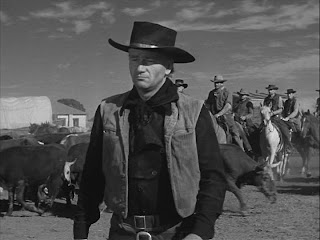
For Few Dollars More or Per qualche dollaro in piùis the second movie in Sergio Leone’s trilogy of western greats. Sergio Leone brings Clint Eastwood and Gian Maria Volonte back after a Fistful of Dollars to create this sequel. Sergio Leone, Italian Director, once again worked his magic in the Italian countryside. Leone created westerns unmatched by previous American westerns. Leone’s films embodied the cool collected gunslinger. In For a Few Dollars More, Clint Eastwood as Monco and Lee Van Cleef as Col. Douglas Mortimer are bounty hunters serving justice on those that escape the law. The two men are informed that El Indio played by Gian Maria Volonte known outlaw has escaped from prison and the two men set out to attain the reward for bring him in dead or alive.


Monco and Col. Douglas Mortimer team up to catch El Indio and his gang. The two men are after the outlaws to get the bounty. Along with needing to devise a plan to take down El Indio these two gunslingers must leave the comfort of being alone and face the difficulties of working together. In order to take down El Indio Monco must get into El Indio’s gang while Col. Mortimer attacks them form the outside. The two gunslingers must try and remain close to El Indio without him knowing their objectives.

The movie starts of with two scenes one of Monco entering the town and one of Col. Mortimer entering the town. We she both men establish their superior gunsling skills as they take down outlaws. Immediately we see a fascination in the kill. We see Monco take down his outlaw calmly, quickly and with style. While we see Col. Mortimer let his outlaw run while he chooses what weapon to kill him with. Once the decision is made the outlaw is taken off his horse and killed from incredible range with one shot. The two gunslingers then find out that El Indio has a price on his head and they both start out to find him. On the journey to find him each man realizes that the other has the same objective. Monco and Col. Mortimer met and after some dispute decide to team up and take down EL Indio and his gang. Monco plans to infiltrate El Indios gang and attack them from within while Col. Mortimer will attack them from outside. El Indio plans a bank robbery and Monco and Col. Mortimer plan to stop him then. El Indio and his gang are able to escape the gunslingers unharmed and with the money from the bank. The two gunslingers have trouble trusting each other. The men are true westerners and as everybody knows (or at least our class) true westerners isolate themselves and work best alone. But the task of taking down El Indio will require them both and so the eventually trust each other to complete the mission. After the Bank robbery Monco and Col. Mortimer follow EL Indios crew east. (Monco still in the gang and Mortimer following) The men attempt to steal the money but get caught, then in an attempt to get all the money El Indio relases them but says the men have stolen the money. Little to EL Indios knowledge the gunslingers actually did take the money. El Indio and the gang then attempt to get Monco and Col. Mortimer but the two men kill the gang one by one in the towns streets. At the end Col. Mortimer and EL Indio have a gun dual. Spoiler alert!!! IN the dual that Monco oversees the viewer learns that EL Indio killed Col. Mortimer’s sister and revenge was Mortimer’s drive not the money. Mortimer kills El Indio and takes only the locket El Indio stole from his sister leaving Monco the reward for El Indio and all his men a total of 27,000 dollars!
_4.jpg)
This movie explores several new things in a western. First it shows the hero teaming up and not able to do it on his own. Second it shows a fascination with the coolness of killing unmatched in other westerns. Sergio Leone’s trilogy of westerns (the Spaghetti Westerns) will forever become of the greatest westerns.












.jpg)
























